I closed my last piece by saying that I was just about to depart for a couple of days’ pike fishing on Chew Valley Reservoir after being invited along by my good friend Ian who’d had the good fortune to secure a couple of two day sessions.
On this occasion we’d decided to travel over the day before the first of our two days’ fishing to give us the opportunity to have a walk around and form an idea of where to head the following morning. It would also mean that we could have a proper evening meal and a few hours’ decent kip at a local inn before the session, rather than the usual ridiculously early start when the full journey from home to the venue is involved.
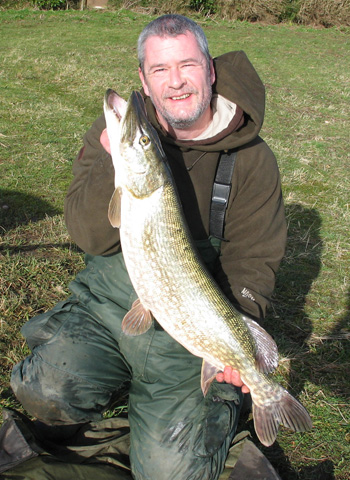 We arrived at Chew around lunchtime and spent the afternoon looking around and talking to some of the pike anglers fishing on the day. Over dinner that evening we discussed the various pros and cons of all the likely areas and decided that the ‘Stones’ off the side of Nunnery Point would be out first choice the following day. It’s a deep water area that can be quite popular earlier in the season, but doesn’t tend to get too busy towards the ‘back end’ as the shallower areas become more favorable. Neither of us had fished the area before but we’d both got the right vibes when we’d stopped off to have a look around and it also had the advantages of being an area of bank that was unlikely to be crowded out by other anglers and would be a reasonably sheltered if the wind really picked up.
We arrived at Chew around lunchtime and spent the afternoon looking around and talking to some of the pike anglers fishing on the day. Over dinner that evening we discussed the various pros and cons of all the likely areas and decided that the ‘Stones’ off the side of Nunnery Point would be out first choice the following day. It’s a deep water area that can be quite popular earlier in the season, but doesn’t tend to get too busy towards the ‘back end’ as the shallower areas become more favorable. Neither of us had fished the area before but we’d both got the right vibes when we’d stopped off to have a look around and it also had the advantages of being an area of bank that was unlikely to be crowded out by other anglers and would be a reasonably sheltered if the wind really picked up.
Early the following morning we were back and ready to fish. Ian had first choice as he had managed to obtain the tickets, so he decided to fish towards the left-hand side where there were more features to target. I was happy with my area as there was loads of space to the right, with some nice drop-offs close in. I was also hoping that any pike approaching our swims from the huge bay to our right would potentially come across my baits first.
Softer and oilier deadbaits seem to attract the attentions of the trout and what appeared to be the odd trout picking up and dropping the baits were the only signs of interest early on. Eventually though I had a ‘proper’ run on a large bluey in about 11ft of water and our first pike of the session was soon on the unhooking mat. It wasn’t a monster, going two ounces short of 14lb but the excitement of a run on Chew is always welcome. The only other fish we landed on Day one was a large brown trout that managed to hook itself while messing about with another one of my deadbaits.
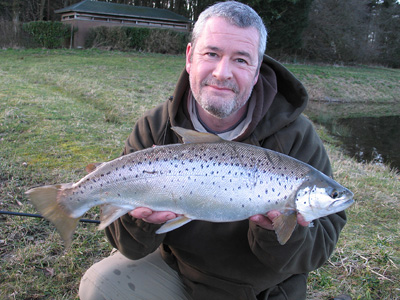 Reports of fish from other areas were pretty thin on the ground, so after some debate we eventually decided to try the same area on the second day, as we both felt confident that it could produce a big fish. However it wasn’t to be, and the only pike we landed on the second day was another fish to my rods that only just made it into double figures.
Reports of fish from other areas were pretty thin on the ground, so after some debate we eventually decided to try the same area on the second day, as we both felt confident that it could produce a big fish. However it wasn’t to be, and the only pike we landed on the second day was another fish to my rods that only just made it into double figures.
Unfortunately Ian’s run of Chew Valley related misfortune continued and he blanked once more. It seems like Chew is developing into something of a bogey water for Ian, as he’s yet to have a pike from the place. However I have a feeling that he’s just storing his luck up for something really special and I most definitely want to be around when that bobbin eventually drops off and he hooks into his first Chew pike!
With only the last two weeks to go before the close season, the rains finally eased off and the rivers eventually started to look as though they might be worth trying for the chub. My winter plans for the big chub on the river Lea that I’d earlier had to abandon due to the poor river conditions were therefore revitalized and with less than a fortnight of the rivers season left a two night session was hastily arranged.
Once I could get down to the river I could see that the amount of extra water coming through clearly wasn’t as much as it had been in the past, but unfortunately the color still wasn’t looking quite right and the first night of my river Lea chub trip was uneventful so far as the chub were concerned.
The following day some of the color seemed to be dropping out of the river and things were starting to look a little more promising. I cast out at first light and almost immediately hooked a chub; however it wasn’t one of the big ones and at 4lb 11oz was quite a long, lean fish in comparison to most of the chub in this stretch – it was also my only bite of the session.
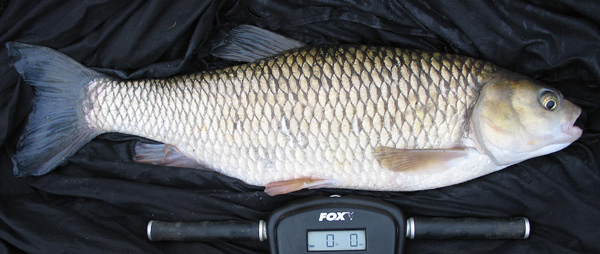
The following week I was back on the Lea again, with the river looking as good as it had done at any previous time during the entire winter. Eventually my efforts paid – off to an extent – and I managed to catch two more chub, but unfortunately they were fish in the 3lb to 5lb category rather than the proper biggies that the river is famous for. I’d still like to catch another big River Lea chub at some point, so I’ll have to see if I can fit in a few sessions next winter.
 Once I was back from my trip to the Lea I had a night at home to sort a few things out then it was off to Five Lakes to be ready for the Carpin’ On weekend where I’d be manning the Predation Action Group (PAG) stand over the two days of the show. This would be the third year on the trot that I’ve done this and it certainly makes for a full on, but interesting and enjoyable couple of days. The actual show days themselves are quite hard work and I’ve usually manage to talk myself hoarse by the end of the show on the Sunday, but it’s also very rewarding and the social side associated with the weekend is always memorable.
Once I was back from my trip to the Lea I had a night at home to sort a few things out then it was off to Five Lakes to be ready for the Carpin’ On weekend where I’d be manning the Predation Action Group (PAG) stand over the two days of the show. This would be the third year on the trot that I’ve done this and it certainly makes for a full on, but interesting and enjoyable couple of days. The actual show days themselves are quite hard work and I’ve usually manage to talk myself hoarse by the end of the show on the Sunday, but it’s also very rewarding and the social side associated with the weekend is always memorable.
The only regret that I have from these particular show weekends is that because I’m virtually chained to the stand over the two days, I don’t really get the chance to have a good look around to check out the vast array of tackle and bait on display. Fortunately some of the exhibitors were happy to bring some of their gear round to the stand for me to have a look at and I was even presented with some free samples to take home and have a play with. A good example of this were the folks from ‘Franksleads’, who were showing off their range of coated leads for the first time; available in all sorts of different coatings to blend in with every imaginable lake bed bottom you could possibly encounter, there’s bound to be something that will fit the bill when a more unusual scenario presents itself.
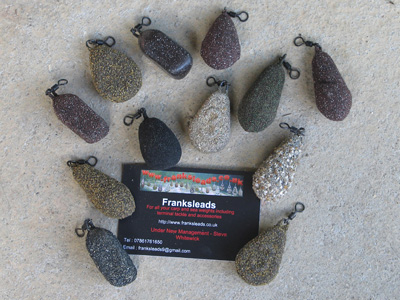 While we’re on the subject of leads I might as well take the opportunity to share my views on the subject of ‘dumping the lead’, which is a term generally covering purposefully losing/ejecting the weight, either when a fish picks up the bait (and comes across the resistance of the weight on straightening out the hook length), or at some point during the fight, especially if the fish happens to get stuck in snags or weed.
While we’re on the subject of leads I might as well take the opportunity to share my views on the subject of ‘dumping the lead’, which is a term generally covering purposefully losing/ejecting the weight, either when a fish picks up the bait (and comes across the resistance of the weight on straightening out the hook length), or at some point during the fight, especially if the fish happens to get stuck in snags or weed.
This is a subject that appears to have come under some scrutiny again in recent times, with extreme views at either end of the debate. Because of the very conflicting viewpoints (and advice), it’s clear that some anglers are becoming quite confused over the issue and it’s one that I’ve been questioned about on several occasions recently.
Obviously the subject is particularly relevant in carp fishing circles, where the use of a relatively heavy weight is quite common. However relatively similar rigs have become ever more popular and widespread in the pursuit of the majority of the coarse fish species, so the debate is relevant to most anglers.
At one end of the argument is the view that, for fish welfare reasons, the weight should be dumped every time a fish picks up the hook bait. At the other extreme are the views expressing grave concern over potential environmental issues due to lead weights being dumped in large numbers in waters around the country; some have even suggested that the practice of dropping leads could lead to the poisoning of our freshwater waterways in the future. Additionally ‘dumping the lead’ has been classed as a form of littering and an unnecessary expense promoted by tackle companies with an interest in increased sales of lead weights. I have friends whose opinions sit at either end of these two extremes, although my own viewpoint on this lies somewhere in-between.
I’ve yet to see any convincing scientific evidence that suggests any potential environmental issues resulting from the dumping of leads, even if the practice continues for many years to come. However I really can’t see the logic in unnecessarily dumping the lead on the take, as I don’t feel that at this point the weight is causing any harm to the fish. I may also be using the resistance of the weight to aid self-hooking, so if in these instances the rig is set up in such a way to eject the lead when the fish picks up the bait, then some advantage of that particular rig will be negated.
When I’m fishing weedy waters, where I feel there is potential for a hooked fish becoming stuck in weed then, if possible, I like to incorporate a lead release system into my end tackle. In this case dropping the lead is pretty much a last resort and I often find that a weeded fish will help to extract itself if given enough time and leeway to move about sufficiently.
Note: In order for lead release systems to work as designed, sufficient slack line and time needs to be provided for the fish to move itself in the right direction away from the wedged lead so that it can be pulled out of the clip.
I’ve used quite a few different types and makes of lead release clip since they were first introduced, although I’ve found that some designs tend to keep the weight gripped in the clip too tightly and are therefore unlikely to actually release the lead so do check before use and amend if necessary by shortening the length of the lead retaining stem and / or the tension of the retaining rubber.
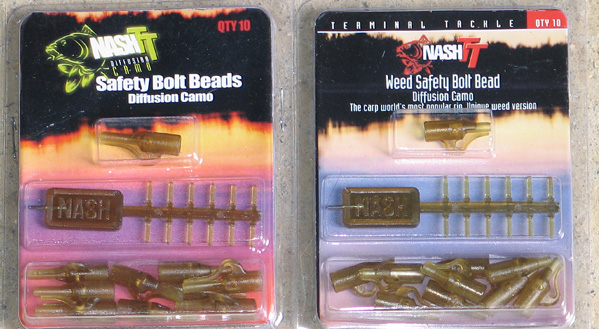
Towards the end of March, another social occasion that I really look forward to every year is the Northampton Specimen Group (NSG) annual dinner and prize giving evening. This year was another fantastic evening, enjoyed by all, and just to make it extra special I even managed to pick up one of our major annual awards for myself in the shape of the Kingfisher Trophy for the best ‘all-rounder’ of the previous year as voted for by the group members.
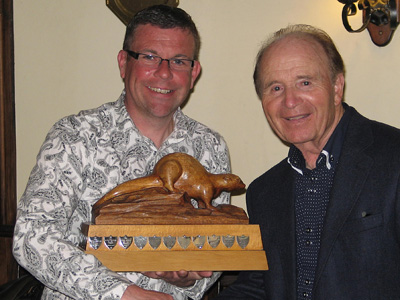 Without listing all the trophy winners; some of the other major awards presented on the evening went to Bob Church for the best game fish, Mike Green for the best foreign fish, Duncan Kay for the heaviest barbel and Mike Milton who scooped up two of the major prizes; one for the best multiple catch of the previous year and the other for the best overall specimen taken in 2013 with a new group record carp.
Without listing all the trophy winners; some of the other major awards presented on the evening went to Bob Church for the best game fish, Mike Green for the best foreign fish, Duncan Kay for the heaviest barbel and Mike Milton who scooped up two of the major prizes; one for the best multiple catch of the previous year and the other for the best overall specimen taken in 2013 with a new group record carp.
Once the close season on the rivers comes about it usually acts as a prompt for me to get the final preparations for my gear and bait sorted out for my initial April/May spring campaign. After losing what I was sure was the monster bream last year under such unfortunate circumstances, I’m determined to put in one more (last?) effort into Ferry Lagoon this year to see if I can finally land the bream that I’ve been obsessing about for the last five years. With Ferry Lagoon being such a challenge and rarely producing any bites, I’m thinking about mixing up sessions on there with trips over to the Bluebell complex near Peterborough to help keep things interesting.
Whatever happens I’ll keep you updated next month.
Until then… happy fishing!










